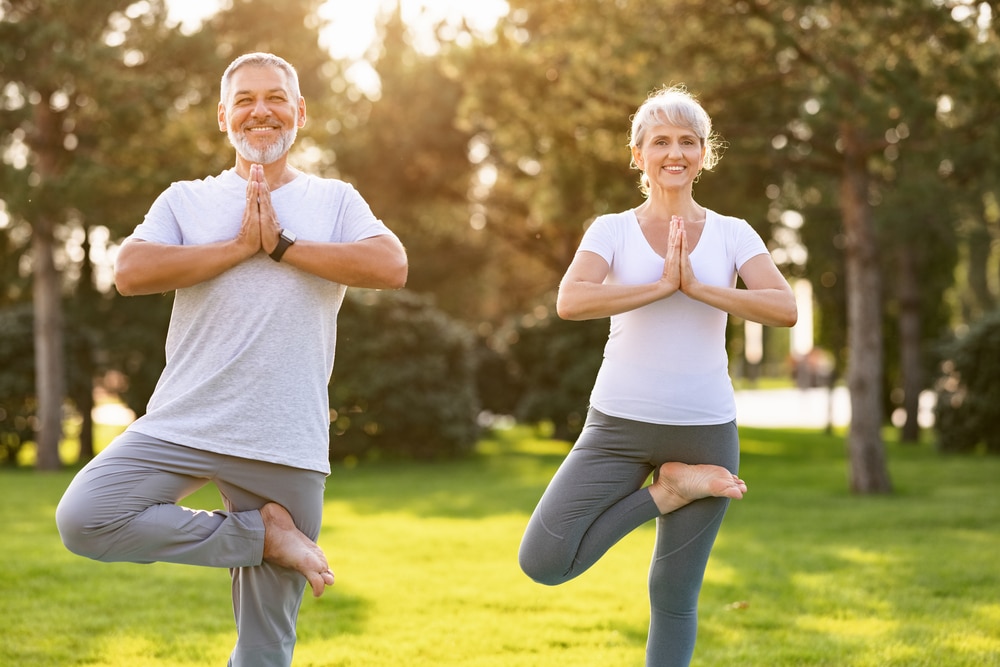
Yoga for Arthritis
I’ve written a brief introduction to this in the form of a letter entitled, “I understand.”
Arthritis can make everyday activities challenging and impact your quality of life. Yoga provides a gentle yet effective way to reduce pain, increase mobility, and regain your sense of vitality. This guide covers how yoga can help you manage arthritis, strengthen your body, and improve your overall well-being.
This is an introduction to deeper articles which you can dive into by clicking on the links. Let’s get into it.
9 Amazing Reasons Why Yoga Is Awesome for Your Joints & Spine
Below is a concise summary for the purposes of summarizing an overall post on Arthritis. For a deeper dive on the 9 Amazing reasons why Yoga is Awesome for Your Joints & Spine, click here.
- Improves Joint Mobility and Flexibility: Yoga uses static, dynamic, and proprioceptive neuromuscular facilitation (PNF) stretching to relax nerve pathways, increase tissue stretchiness, and improve tolerance to stretching.
- Prevents Injury: Yoga promotes ideal muscle tension, improves muscle tension awareness, and activates underused muscle groups to prevent overuse and underuse injuries.
- Improves Strength: Yoga combines isometric, concentric, and eccentric contractions to build muscle strength, enhance coordination, and promote muscle healing.
- Promotes Soft Tissue Healing: Yoga helps balance scar tissue formation and promotes organized, cohesive tissue healing to reduce stiffness and prevent re-injury.
- Improves Balance & Stability: Yoga strengthens the balance pathway by optimizing sensory input, boosting brain analysis, and improving movement execution.
- Reduces Inflammation & Oxidative Stress: Yoga reduces inflammation by calming the brain’s internal alarm system, balancing the autonomic nervous system, boosting anti-inflammatory hormones, and reducing stress.
- Reduces Stress and Negative Emotions: Yoga decreases chronic stress and negative emotions by enhancing brain structure, rebalancing the autonomic nervous system, reducing stress hormones, and promoting positive emotions.
- Helps with Weight Management: Yoga increases physical activity, reduces stress-related binge eating, and improves mindfulness, all of which support weight loss and maintenance.
- Reduces Pain: Yoga reduces pain by improving muscle function, preventing injury, decreasing inflammation, and modulating pain signals. Also check out 4 Must-Have Herbs & Spices for Chronic Pain, Top 3 Teas to Battle Chronic Pain, & 5 Strategies to Eliminate Chronic Pain.
7 Easy Tips to Make You a Yoga Pro
Below is a concise summary. For a deeper dive on the 7 Easy Tips to Make you a Yoga Pro, click here.
- Start Slow: Begin with beginner-friendly poses and gradually progress to more advanced movements.
- Be Consistent: Regular practice is key to seeing benefits; aim for at least 3-4 sessions per week.
- Listen to Your Body: Avoid pushing through pain; modify poses as needed.
- Focus on Breath: Incorporate deep, mindful breathing to enhance relaxation and reduce tension.
- Use Props: Blocks, straps, and pillows can provide support and help you achieve proper alignment.
- Warm Up & Cool Down: Incorporate warm-up stretches before and cool-down poses after each session.
- Seek Guidance: Attend classes or work with an instructor for personalized guidance.
Yoga for the Upper Body
Below is a bulleted list of the Yoga for the Upper Body poses. For a deeper dive summary of each of these poses, click here.
- Supported Fish Pose: Opens the chest and shoulders.
- Cat & Cow Pose: Improves spinal mobility.
- Child’s Pose: Gently stretches the back and shoulders.
- Cobra Pose: Strengthens the back muscles.
- Embryo Pose: Provides a calming stretch for the upper body.
- Gate Pose: Increases side body flexibility.
- Side Plank: Strengthens the obliques and shoulders.
- Plank Pose: Builds core and shoulder strength.
- Downward Dog: Stretches the back, shoulders, and hamstrings.
Yoga for the Lower Body
Below is a bulleted list of the Yoga for the Lower Body poses. For a deeper dive summary of each of these poses, click here.
- Low Lunge: Stretches the hip flexors.
- Half Splits: Improves hamstring flexibility.
- Tuck N Curl: Engages the core and stretches the back.
- High Crescent + Arc: Strengthens the legs and stretches the side body.
- Warrior 1 & 2: Builds leg strength and balance.
- Triangle Pose: Stretches the hamstrings and opens the chest.
- Lateral Lunge: Stretches the inner thighs.
- Bridge Pose: Strengthens the glutes and back.
- Bound Angle Pose: Opens the hips and groin.
Also check out Why Mind-Body Exercise Reduces Chronic Pain and Why Eccentric Exercise Protects Against Injury & Chronic Pain
Conclusion
Yoga offers an accessible and effective way to manage arthritis symptoms, improve joint health, and enhance overall physical and mental well-being. By incorporating yoga into your routine, you can take control of your arthritis, regain mobility, and cultivate a greater sense of peace and vitality. Remember, the key is consistency—practice, practice, practice!